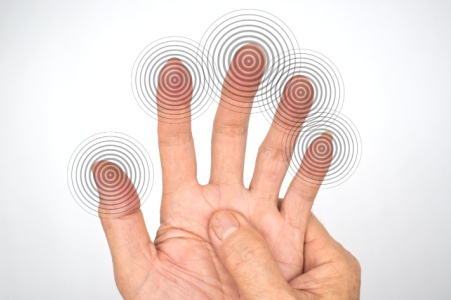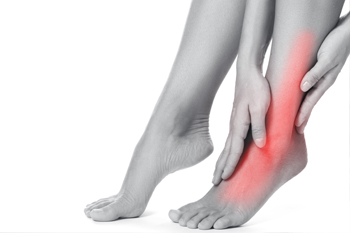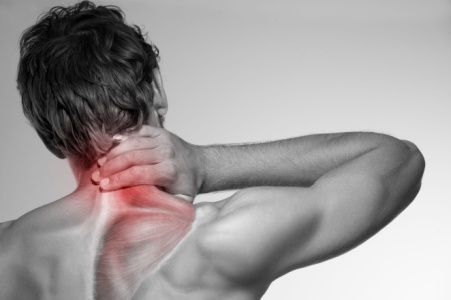Blog
Items filtered by date: July 2025
Causes and Chiropractic Care for Numbness and Tingling

Numbness and tingling are unusual sensations that often feel like pins and needles and may affect any part of the body. Depending on where it is felt, these symptoms can be caused by prolonged sitting or standing, nerve injuries, vitamin B deficiencies, radiation therapy, or even insect or animal bites. They may signal poor circulation or underlying nerve dysfunction. A chiropractor can evaluate the cause through a detailed physical examination and offer targeted care to relieve pressure on nerves, improve alignment, and restore function. If you are experiencing unexplained tingling or numbness, do not ignore it. It is suggested that you seek professional help from a chiropractor to find relief, support your nervous system, and improve your overall well-being.
Numbness and Tingling
Numbness and tingling sensations can disrupt daily life, often arising from issues like nerve compression, poor circulation, or structural imbalances. These symptoms, commonly felt in the hands, feet, arms, or legs, range from mild pins and needles to persistent discomfort. Conditions such as herniated discs, carpal tunnel syndrome, or peripheral neuropathy are frequent causes, often linked to irritated or restricted nerve pathways. Left untreated, these sensations may worsen, leading to reduced mobility or further nerve damage.
Chiropractic care addresses numbness and tingling by focusing on the root causes. A chiropractor evaluates spinal alignment, nerve function, and contributing factors like posture or muscle tension. Through targeted adjustments and therapies, they relieve nerve compression, improve circulation, and restore function. Lifestyle recommendations complement treatment, offering long-term relief and promoting nerve health.
1. Are numbness and tingling always nerve-related?
Not always. While often linked to nerve compression, these sensations can also result from poor circulation or systemic conditions. Chiropractors assess for nerve involvement and recommend appropriate care or referrals.
2. Can numbness and tingling affect only one side of the body?
Yes, these symptoms can be unilateral, often indicating localized nerve compression or structural imbalances, which chiropractors can identify and treat.
For additional information, please contact our office located in Red Wing, MN .
Relieve Hand Pain and Numbness

If your wrist feels numb, weak, or tingling, it could be due to carpal tunnel syndrome. This happens when a nerve in the wrist becomes compressed, often from repetitive motion or strain. Gentle adjustments can help relieve pressure and improve movement.
Restore comfort and hand function. Schedule your appointment today.
Finding Relief from Elbow Pain with Chiropractic Care

Elbow pain can result from a range of causes, with arthritis being a common contributor. Arthritis in the elbow may include osteoarthritis, which involves joint wear over time, rheumatoid arthritis, an autoimmune condition, and post-traumatic arthritis that follows an injury. These conditions can lead to swelling, stiffness, and pain that interfere with daily tasks. A chiropractor can help identify the source of the discomfort and offer targeted care to relieve pressure, improve joint alignment, and support healing. Through manual therapy, soft tissue work, and mobility exercises, chiropractic care offers a natural way to ease pain and restore movement. If you are struggling with elbow pain, it is suggested that you schedule a chiropractic consultation to begin your journey toward lasting relief.
Elbow pain can make even simple tasks challenging, often resulting from repetitive movements, strain, or injuries. Conditions like tennis elbow, golfer’s elbow, and nerve entrapment are common culprits, leading to inflammation and discomfort in the tendons or surrounding tissues. Whether caused by sports, work activities, or an accident, persistent elbow pain can hinder mobility and strength.
Symptoms may range from sharp pain and stiffness to numbness or a weakened grip, interfering with daily life. While pain relief methods like rest can help, they may not address the underlying problem.
Chiropractic care focuses on identifying and treating the source of elbow pain. Through gentle adjustments, soft tissue therapies, and targeted exercises, chiropractors relieve tension, improve joint function, and reduce inflammation. This holistic approach helps not only to ease pain but also to prevent future issues, ensuring long-term comfort and mobility.
1. How does spinal alignment affect elbow pain?
Misalignments in the spine can compress nerves that travel to the arm, leading to referred pain or tension in the elbow. Correcting alignment helps relieve this pressure and improve function.
2. How can chiropractic care help prevent recurring elbow injuries?
Chiropractors identify movement patterns or misalignments that contribute to strain and provide strategies to improve mechanics. This reduces the likelihood of reinjury.
If you have any questions please feel free to contact our office located in Red Wing, MN .
How Chiropractic Care Can Help With Auto Injuries

Auto accidents can lead to a range of injuries, even in low-speed collisions. Whiplash is one of the most common, causing neck pain, stiffness, and reduced range of motion. Head and brain injuries may result in headaches, dizziness, or difficulty concentrating. Spinal cord injuries can affect posture, mobility, and overall function. These injuries may not always be immediately noticeable, but they can worsen without timely care. A chiropractor can help by evaluating spinal alignment, reducing inflammation, and promoting natural recovery through gentle adjustments and rehabilitation. If you have been in an auto accident, after any emergency care is obtained, early chiropractic care can support healing, reduce discomfort, and restore function. It is suggested that you schedule a consultation with a chiropractor as quickly as possible, taking action to protect your long-term health and well-being.
Auto accidents can disrupt your life in an instant, often leaving behind injuries that require careful attention. From neck pain due to whiplash to fractures and joint strain, the physical toll of a collision can range from mild discomfort to severe limitations. Even seemingly minor accidents can lead to soft tissue injuries or concussions, with symptoms like headaches, stiffness, swelling, or reduced mobility appearing days after the event.
Addressing these injuries promptly is key to preventing long-term complications. Chiropractic care offers a non-invasive path to recovery, focusing on realigning the body, reducing inflammation, and easing pain. By targeting the root cause of discomfort, chiropractors can help restore range of motion and improve overall well-being. Whether you’re dealing with lingering aches or recovering from more serious injuries, personalized chiropractic treatment plans can support your journey to recovery. Take the first step toward healing and schedule a consultation today.
1. Can I see a chiropractor if I’ve already seen a doctor?
Yes, chiropractic care complements traditional medical treatments. It focuses on holistic recovery and relieving musculoskeletal issues.
2. What should I expect during my first chiropractic visit after an accident?
Your chiropractor will perform a thorough assessment, discuss your symptoms, and create a personalized treatment plan.
If you have any questions please feel free to contact our office located in Red Wing, MN .
Support for Foot Pain in Workers Who Stand All Day

Long hours on hard surfaces can lead to tired, aching feet and discomfort that spreads to the knees, hips, and back. Many workers who stand all day experience pain caused by poor alignment or uneven pressure on the feet. Chiropractors often address this issue by combining spinal adjustments with supportive footwear solutions. When the spine and lower body are in proper alignment, the entire frame functions more efficiently. Custom orthotics, designed to match the unique shape of your feet, help distribute weight more evenly and reduce strain on joints and muscles. Together, adjustments and orthotics can improve balance, reduce fatigue, and make long days more manageable. If your job requires extended time on your feet and you are dealing with ongoing pain, it is suggested that you consult a chiropractor to explore effective ways to find relief.
Foot pain is a common problem that can stem from various causes, such as overuse, injury, or conditions like plantar fasciitis and flat feet. It may present as sharp, aching, or throbbing sensations, often making daily activities like walking or standing uncomfortable. Poor alignment of the foot and ankle can lead to additional strain on surrounding muscles and joints, worsening the problem. Left untreated, foot pain can interfere with mobility and overall quality of life.
Chiropractors take a holistic approach to addressing foot pain. By assessing posture, gait, and foot structure, they can identify underlying imbalances contributing to discomfort. Treatment often includes gentle joint adjustments to restore proper alignment, soft tissue therapies to ease tension, and custom exercises to strengthen the affected area. Chiropractic care aims to resolve the root causes of foot pain and improve function naturally.
1. How does foot pain relate to issues in the back or hips?
Foot pain can often be a symptom of biomechanical issues higher up the kinetic chain, such as misalignments in the hips or lower back. Chiropractors assess these connections to treat the root cause.
2. Do chiropractors treat conditions like plantar fasciitis differently from podiatrists?
Chiropractors focus on whole-body alignment, addressing how foot pain may stem from or contribute to imbalances in the spine or posture, complementing podiatric approaches.
3. Can chiropractic care improve my walking or running gait?
Yes, by correcting misalignments and improving joint function, chiropractic care can enhance gait mechanics, reducing strain and preventing future foot pain.
If you have any questions please feel free to contact our office located in Red Wing, MN .
Chiropractic Care and Pinched Nerve Pain

A pinched nerve, also known as radiculopathy, occurs when surrounding tissues apply pressure to a nerve, disrupting its function. This condition can lead to pain, tingling, numbness, or weakness, often radiating from the spine into the arms or legs. Common causes include herniated discs, spinal misalignment, or inflammation. Risk factors include repetitive movements, poor posture, obesity, or underlying conditions like arthritis. A chiropractor can help by identifying the source of compression and using spinal adjustments, stretching techniques, and posture guidance to relieve pressure and restore nerve function. If you are experiencing signs of a pinched nerve, it is suggested that you consult a chiropractor who can offer a safe and noninvasive way to reduce symptoms and support long-term recovery.
Pinched Nerve
A pinched nerve occurs when surrounding tissues, such as bones, muscles, or tendons, apply excessive pressure on a nerve. This condition can cause pain, numbness, tingling, or weakness, often in the neck, back, or limbs. Everyday activities, poor posture, or repetitive motions are common triggers. Left untreated, the condition may worsen, leading to chronic discomfort and reduced mobility.
Chiropractors use a hands-on approach to relieve the pressure that causes a pinched nerve. By performing gentle spinal adjustments, they create space for the nerve to function properly, alleviating discomfort. Chiropractic care may also include stretching exercises to improve flexibility and targeted muscle work to reduce surrounding tension. Patients often receive guidance on posture and activity modifications to prevent recurrence. This tailored approach focuses on restoring normal nerve function and improving overall quality of life.
1. Are pinched nerves only caused by spinal issues?
No, they can also result from tight muscles, inflammation, or repetitive strain. Chiropractors address both spinal and muscular causes.
2. How does a chiropractor determine the location of a pinched nerve?
Chiropractors use physical exams, mobility tests, and sometimes imaging studies like X-rays to pinpoint the source of nerve compression.
For additional information, please contact our office located in Red Wing, MN .
